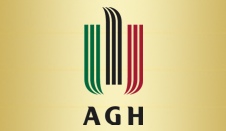RESEARCH PROJECTS AND GRANTS |
LIST OF ACTIVE EDITIONS OF COMPETITIONS available at the E-COP AGH
CURRENTLY RUNNING RESEARCH PROJECT:
Projekt ABM/2022/7 funded by the Medical Research Agency pt. MENTALIO – diagnostic and therapeutic decision support system in the field of teenage mental health based on artificial intelligence algorithms
Grant amount: 3.768.206 PLN
The project was ranked first on the AMB ranking list: Ranking list of the Competition for enterprises for the development of innovative medical devices based on artificial intelligence to coordinate diagnostics and treatment in outpatient specialist care and hospital treatment ABM/2022/7
Implementation period: from 2023-06-12 to 2026-06-11
COMPLETED AND FINISHED RESEARCH PROJECT:
2021-2024 Investigator and performer in the IDUB project No 1570 The use of associative-cognitive deep neural networks for modeling knowledge, prediction and classification in the area of pathophysiology of heart diseases, status: in progress.
Grant amount: 400.000 PLN
Implementation period: from 2021-07-01 to 2023-11-30
The aim of the research work is to apply the developed methods of knowledge modeling with the use of associative-cognitive structures and deep graph neural networks for the prediction and classification of heart diseases based on modeling and automatic analysis of ECG signals. The models developed by us in previous years have proved their effectiveness due to their new possibilities in data modeling taking into account periodical changes. These changes are not sufficiently well represented by many popular key models from the point of view of studying changes based on ECG signals. Many biomedical signals, including in particular ECG signals, are characterized by periodicity, and any disturbances in this periodicity may indicate disturbances in the area of heart pathophysiology. In addition, these signals are often noisy and contain various artifacts. For this reason, classical machine learning methods are not able to detect a large part of heart diseases, but also due to the inability to operate on pseudo-periodic signals (without carrying out appropriate transformations of the input data) and to detect sometimes very subtle differences, carrying important diagnostic information. Our research in this area is aimed at modeling these differences in such a way that all significant changes in ECG signals can be correctly mapped and used to predict heart disease entities, as well as indicate the level of adverse changes in heart rate. Our goal is to create such methods and models for ECG that will be able to support doctors and effectively control people with ailments, warning these people or recommending treatment for detected diseases or disorders.
However, further development of the developed neural structures and associative-cognitive methods and their use for large data sets depends to a large extent on computational capabilities, which currently limit our further research in this field. Modeling and effective adaptation and learning of associative-cognitive deep neural structures requires the use of specialized equipment for mixed computing (asynchronous-synchronous parallel computations in the context of time with full control of processes taking place in them at the stage of their modeling) that can efficiently and quickly perform such calculations. Hence, the main objective of this application is to obtain funds for the purchase of equipment allowing for further research on large data sets, which determines the possibility of conducting world-class research and publishing the developed results in highly scored scientific journals.
Research Group
- dr hab. Adrian Horzyk, prof. AGH UST - Principal Investigator and Contractor
- lek. med. Daniel Bulanda - Ph.D. Student, Contractor
- prof. dr hab. inż. Janusz A. Starzyk, prof. Ohio University - scientific cooperation from outside AGH
- dr hab. n. med. Marek Jastrzêbski, prof. Jagiellonian University - scientific cooperation from outside AGH
The constructed application FLEXPOINTS.BIONETLABS presenting the abilities and results for any ECG signals is available.
COMPLETED AND FINISHED RESEARCH PROJECT:
One of the Principal Investigators in the OPUS project No 2016/21/B/ST7/02220, 21st Edition: Development of effective mechanisms for robot perception using motivated learning and self-organizing associative memory was accomplished in years 2017-2020.
Webpage of the project
Intelligent devices become more prevalent in our lives. The development of machine intelligence is linked to solving many various scientific and engineering problems. Their solution requires rapid searching and identification of objects in a dynamically changing environment and acting on these objects in order to achieve defined objectives. Both objects as well as performed on them operations can be described through various patterns. Currently, there are no universal methods for representation and automatic consolidation of the various categories of patterns in a cognitive system to successfully operate on them and allow for the expansion of knowledge about the involved processes. There is a lack of machine learning methods allowing for automation of processes forming knowledge about the environment that the system needs to achieve its tasks.
The aim of the project is to create an artificial neural network inspired by the way of working of the human brain, allowing for cost-effective representation of various objects and operations performed on them. The network will have the task of responding to familiar and new situations using the acquired knowledge and ability to generalize.
Another objective of the proposed research is to develop new effective mechanisms of perception using a generalized idea of the motivated learning and new associative learning and reasoning mechanisms. Motivated learning will be applied in virtual robots working in specially designed for this purpose simulation environment as well as in physical robots operating in the real world. Motivated learning is to allow robots to identify goals and learn how to achieve them. The project also provides for expansion of incentive mechanisms in such a way that the action of the two cooperating robots could stimulate each other for a joint action. Robots will be equipped with perceptual mechanisms developed in this project. Environmental information will be collected via a system of cameras, microphones and distance meters. On this basis, the space-time patterns will be created and used for robot training. Operations of the sensory systems will be supported by specialized methods of image and sound processing. Associative neural system will generate signals to control robots in a virtual or real environment.
The scientific goal of this research is the development of new memory mechanisms capable of semantic and episodic representation of patterns from the environment. It is planned to build and test an innovative system of visual and acoustic perception for a robot based on the mechanisms of episodic memory. Our hypothesis is that the perception of visual and acoustic stimuli will bring the best results after applying the learning systems with memory, capable of collecting and modelling knowledge and creating associative memory for any spatio-temporal patterns. We will develop new associative mechanisms of contextual recalling of patterns established in these memories, supporting the achievement of the objectives. An important task is to achieve a generalization of the associative system operations to other cases.
The project will use parallel computing to imitate the natural operations of the nervous structures and to increase the efficiency of data processing. The project will try to prove the research hypothesis that the associative representation and exploitation of knowledge is possible in a manner similar to biological nervous systems.
Expected results of the proposed basic research will have an impact on the development of the next generation of robots, especially when performing operations and tasks with increasing autonomy, security, confidence and intelligence. Acquired knowledge can be applied in many fields for automatic perception, monitoring and recollection of the environment; location, detection and identification of interesting objects; making decisions based on understanding of the environment and external stimuli, and acting in cooperation with a human.


